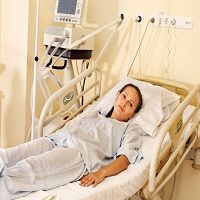Article
Diagnosis Tricky but Early Treatment Critical for Autoimmune Hepatitis
Author(s):
Autoimmune hepatitis (AIH) represents a complex and heterogenous disease entity, with an increasing incidence for both genders and worldwide.

Autoimmune hepatitis (AIH) represents a complex and heterogenous disease entity, with an increasing incidence for both genders and worldwide. Michael Heneghan, MD, consultant hepatologist at London’s King’s College Hospital, provided a broad overview of AIH etiologies, pathophysiology, diagnosis, and treatment to a general hepatology audience on November 9, 2014 at The Liver Meeting in Boston, MA.
A variety of pharmacologic and viral triggers are implicated in AIH. These include hepatitis A and cytomegalovirus infection, as well as the use of such drugs as minocycline, nitrofurantoin, and the statins. Autoantigen triggers, disordered immune regulation, and a component of genetic susceptibility also factor into immunopathogenesis of AIH.
More common in women than men, AIH follows a bimodal distribution for age at first presentation in both genders; a peak in adolescence is followed by a larger peak, much steeper in women, in late adulthood. Patients, especially younger patients, are usually symptomatic on presentation, with fatigue, joint pain, right upper quadrant pain, and rash among common presenting symptoms.
Since the symptom and serum marker profile has considerable overlap with other autoimmune and liver diseases, the application of the International Autoimmune Hepatitis Group (IAHG) scoring system can improve diagnostic accuracy. IAHG scoring, for example, gives greater weight to higher antibody titers, but models a reduced risk of AIH for individuals with elevated liver enzymes, which increase the likelihood for another symptom etiology.
However, said Heneghan, AIH remains a liver disease for which biopsy is mandatory. Though there is not a pathognomonic pathologic appearance of an AIH-affected liver, interface hepatitis, rosette formation, cirrhosis, and bridging necrosis and collapse may all be seen. Pathology, together with either the full IAHG scoring or use of a simplified clinical scoring tool, will yield a probable or certain AIH diagnosis.
Though IAH falls into one of three subtypes depending on defining antibodies, treatment options are the same for all subtypes. However, individuals with high levels of liver-kidney microsomal type 1 (LKM-1) antibodies are usually younger on presentation and tend to have more severe disease; they are also more likely to develop cirrhosis.
For any AIH subtype, the presence of cirrhosis at baseline presentation worsens the probability of survival at ten years by over 30%. Other predictors of worse long-term outcome include liver decompensation, the development of cirrhosis at any time, failure or alanine aminotransferase (ALT) to normalize within 12 months of treatment, and greater than four AIH relapses per decade.
The longtime mainstays of AIH treatment were, and are, steroid therapy and immunosuppressive treatment with azathioprine. “Patients will die if they are not treated with steroids,” Heneghan made clear, citing studies from the 1960s that compared steroid intervention with placebo. High-dose prednisone, with or without azathioprine, is the recommended initial treatment for AIH, and long-lasting remission may be induced with azathioprine.
Budesonide has also been studied for AIH treatment. When compared with prednisone, the use of the two steroids in conjunction with azathioprine showed superior results for normalization of liver function without steroid-specific side effects in one clinical trial. However, Heneghan added the caveat that response rates for both treatment arms were significantly lower than had been seen in the AIH literature, raising some questions about the validity of the trial. Budesonide should only be used in those without cirrhosis, but may be considered as an option.
Heneghan’s summary of treatment options and goals in AIH allows clinicians to begin with prednisone 40-60 mg/day, or 40 mg/day with azathioprine. If treatment begins with prednisone monotherapy, steroids should be tapered to 7.5-10 mg/day, and azathioprine should be added when bilirubin drops below 50. When prednisone and azathioprine are started together, steroids can be reduced biweekly with concomitant escalation of azathioprine.
Budesonide in non-cirrhotic patients can be begun at 6-9 mg/day, and reduced per response. Azathioprine, when added, can be maintained as a monotherapy until sometime after liver function has been normalized, though AIH recurrences are common. In all cases, says Heneghan, “the goal is to get patients into remission and off steroid treatment.”




